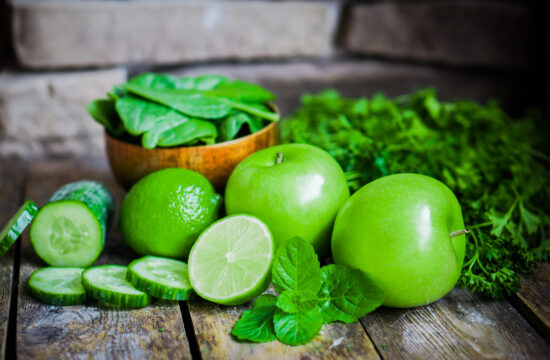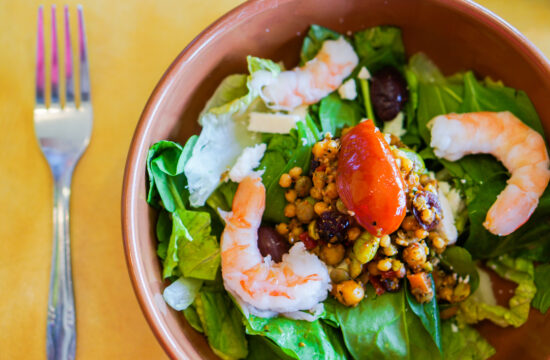Understanding the Low-Oxalate Diet
What is Oxalate?
When I first heard about oxalates, I was completely in the dark. Oxalates are naturally occurring compounds found in many foods. They can bind to minerals and form crystals, which can contribute to kidney stones for some people. This was a game-changer in how I looked at my food choices. Realizing that not all foods are created equal helped me really narrow down what to eat.
In my journey, I discovered that some foods are incredibly high in oxalates. Spinach, rhubarb, and certain nuts fall into this category. Learning about oxalates not only opened my eyes to potential health risks but also gave me the tools to make better decisions about what I eat.
Need a Strong Nutrition Boost for Your Diet? Take a Look...
By understanding oxalates, I could take proactive steps towards improving my health. It was a lightbulb moment to see that I could adjust my diet to lower these risks while still enjoying delicious foods.
The Benefits of a Low-Oxalate Diet
You know, adopting a low-oxalate diet was one of the best decisions I’ve made. For starters, it helped me shed some extra pounds simply by eliminating high-oxalate foods. I was honestly surprised at how much better I felt. My energy levels skyrocketed, making exercise more enjoyable.
Another great perk? It really helped me manage my kidney health. By reducing oxalates, I had less anxiety about developing kidney stones, a concern I once held quite seriously. Peace of mind is truly priceless!
Emotionally, the diet shift was refreshing too. I explored new recipes and discovered delicious, low-oxalate foods tailored to my palate, which was both fulfilling and exciting.
Need a Strong Nutrition Boost for Your Diet? Take a Look...
Who Should Consider This Diet?
If you’re like me and you’re prone to kidney stones, this diet is definitely worth considering. Even if you haven’t had stones before, you might want to explore how oxalates affect your body. It’s a personal journey that could lead you to better health.
Moreover, folks who may have been advised by doctors to manage oxalate levels should think about restructuring their meals. Talking to a healthcare professional can help you determine the right approach.
That being said, if you enjoy a varied diet but are still curious about the low-oxalate options, give it a whirl! You might find it’s not nearly as tough as you’d think.
Planning Your Low-Oxalate Meals
Choosing the Right Foods
Let’s talk food! When I began planning my low-oxalate meals, I started with a simple rule: eat more fruits and veggies that are low in oxalates. Foods like bananas, apples, carrots, and cauliflower quickly became staples in my kitchen.
I had a playful apron session with my partner making salads, opting for fresh, low-oxalate ingredients. A splash of olive oil and some lemon juice later, and we had a delicious dish that was not only healthy but also fun to make.
Don’t forget about protein! Incorporating lean meats and eggs into your meals was easy. These sources not only filled me up but also kept my energy levels steady without the worry of oxalate overload.
Meal Prep Ideas
Meal prepping became my best friend on this journey. Sundays turned into kitchen block parties where I prepped for the week. It’s the best way to ensure I have low-oxalate meals ready to go when I’m busy or unwanted cravings hit.
Chopping veggies, cooking grains, and marinating lean meats made my weekday cooking a breeze. Toss everything together, season it up, and woo-hoo! Dinner was served in no time.
The added bonus? I saved money on those last-minute takeout orders. Who doesn’t love a friendly budget boost while getting healthier at the same time?
Exploring New Recipes
Another exciting part of my journey was diving into new recipes. I found that transforming traditional dishes into low-oxalate versions was surprisingly fun. Think tacos with corn tortillas and lean ground turkey, or zoodles (zucchini noodles) instead of pasta. The possibilities were endless!
I utilized platforms like Pinterest to search for creative low-oxalate recipes. I can’t even tell you how many new favorites I discovered! From blissful smoothie bowls to hearty stews, I was in for a real treat.
Getting my family involved was a major win too! We would gather and share our latest finds, turning healthy eating into a family affair rather than just a personal struggle.
Staying Motivated on Your Diet Journey
Setting Realistic Goals
One thing I learned was to set realistic goals. When I began this low-oxalate diet, I didn’t expect to change overnight. Instead, I established subtle, achievable targets like trying out one new low-oxalate recipe a week.
Taking baby steps not only kept me motivated, but it also led to significant changes over time. Celebrating each mini-victory along the way turned the journey into a celebration instead of a chore.
It’s important to remain kind to yourself, too. Everyone has off days, and that’s perfectly okay. Just remember to brush it off and keep it moving!
Good HealthY DIETING Solution is Easier Than Most People Think!
Take a Look for Yourself!
Finding Support
I won’t lie, having a support system was crucial for me. Whether it was joining online forums, chatting with friends, or forming a mini support group, it made the journey a lot lighter.
Sometimes, sharing tips, tricks, and experiences with others who are on a similar journey was the best remedy for those tough days. Plus, it’s always nice to celebrate wins together!
Don’t be shy about reaching out. Sharing your goals and progress can create an incredible accountability factor that keeps you going. We’re all in this together!
Tracking Your Progress
Keeping tabs on your progress is super helpful. Personally, I found that journaling didn’t just track my meals but also how I felt physically and emotionally on this journey. Sometimes just reflecting on the changes really keeps you focused on your goals.
Another fun way I tracked progress was through social media. Getting involved in low-oxalate groups helped me share my journey and see how others are succeeding too!
The goal isn’t perfection but improvement. That’s something I still remind myself. Celebrate those little wins and enjoy the unique path you’re forging!
Maintaining Long-Term Success
Creating Lasting Habits
As I embraced my low-oxalate lifestyle, I discovered that creating habits was essential. I slowly started to recognize which low-oxalate foods I genuinely enjoyed and made them a consistent part of my diet.
Meal planning became my go-to strategy, and grocery shopping turned into an exciting adventure rather than a chore. I love exploring farmers’ markets for fresh produce that fits my diet and discovering new ingredients!
By keeping it consistent, I could adapt my old favorites to match this lifestyle without feeling deprived. It’s all about balance!
Learning to Indulge Mindfully
Now, don’t get me wrong – indulgence is still on the table, just with mindfulness. After sticking to my low-oxalate diet, I realized how crucial it was to occasionally treat myself. Learning to enjoy treats and then get back on track became part of my strategy.
I’d whip up low-oxalate versions of favorites, like brownies made with coconut flour or using carob instead of chocolate. This way, I could have my indulgences without risking my health.
The key here is moderation. Keeping my mindset focused on balance meant I didn’t feel guilty about enjoying treats while still honoring my health.
Continuing Education and Adaptation
Lastly, continuous learning played a critical role. I kept reading and exploring new dietary ideas, understanding how my body reacted, and adapting accordingly. It’s a beautiful path of growth!
Staying informed about the latest research on oxalates also made me feel empowered in my choices. Knowledge is power, right? Whether it’s through science articles or blogs about diets, I prioritize learning.
And let’s be real – it can be fun! The more I learned, the more I discovered all the culinary options available, making my meals more varied and enjoyable.
FAQ
1. What foods should I avoid on a low-oxalate diet?
You’ll want to steer clear of high-oxalate foods like spinach, rhubarb, beets, and certain nuts. Instead, focus on low-oxalate choices like bananas, cauliflower, and lean meats.
2. Can I enjoy snacks on a low-oxalate diet?
Absolutely! There are plenty of low-oxalate snacks to enjoy. Things like carrots, rice cakes, and yogurt are all excellent options.
3. Is a low-oxalate diet permanent?
This really depends on your personal health goals and any underlying medical conditions. It’s best to consult with a healthcare professional to see what works for you!
4. How do I stay motivated on a low-oxalate diet?
Setting realistic goals, finding a support system, and tracking your progress helped me stay motivated. Celebrate your journey, big or small!
5. Where can I find recipes for a low-oxalate diet?
Pinterest, food blogs, and even cookbooks focused on kidney health are fantastic resources! Don’t hesitate to experiment and create your own culinary masterpieces.












